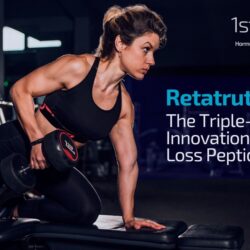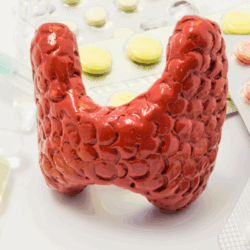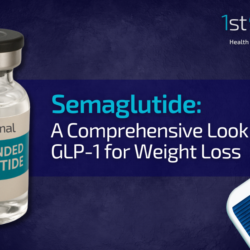Introduction
When morning erections disappear, it isn’t just your libido that’s affected, it may be your heart sending its first alarm. Nocturnal penile tumescence (NPT), or “morning wood,” is an early physiological indicator of vascular health. Because the penile arteries are small (~1–2 mm), even slight endothelial dysfunction shows up in erectile function long before it affects larger vessels like coronary arteries. In other words, losing your morning erection may precede obvious heart disease by 3–5 years .
This long‑form guide for men aged 35–55 draws on the latest research (2018–2025) and clinical experience at 1st Optimal. We’ll examine:
- Hormonal & metabolic underpinnings of erectile function
- How peptides, nitric oxide, and supplements support vascular resilience
- Sleep, gut health, and inflammatory drivers
- Three in‑depth case studies with measurable lab and outcome data
- FAQs addressing common concerns and misconceptions
Our goal? Transform a signal (no morning wood) into a catalyst for early, meaningful, whole‑body restoration using lab insights, personalized protocols, and evidence‑based interventions.
Table of Contents
- The Physiology Behind Morning Erections
- Hormones & Erectile Function Deep Dive
- Peptides, Nitric Oxide & Vascular Support
- Sleep, Stress & REM Cycles
- Nutrition & Supplement Strategy
- Gut Health & Systemic Inflammation
- Three Client Case Studies
- Lab Testing & Diagnostics
- FAQs (15 Questions)
- Conclusion
- Author Bio & CTA
- References
The Physiology Behind Morning Erections
Morning erections, or NPT, occur during REM sleep when vagal tone increases and sympathetic inhibition allows cyclic blood flow. These are unassisted erections that reflect:
- Healthy arterial blood flow
- Functional neural signaling
- Adequate testosterone and NO production
💡 Why the Penis is a “Canary”
- Arteries there are the smallest in systemic circulation — ~1–2 mm diameter
- Coronary arteries are ~3–4 mm; penile dysfunction may precede heart disease
- Risk progression: endothelial dysfunction → plaque → symptomatic disease
Also, NPT protects penile tissue by delivering oxygen-rich blood that maintains healthy smooth muscle and nerve health.
Nocturnal Erection Patterns:
- Occur 3–5 times nightly, lasting ~20–30 minutes each
- Measurable changes in rigidity indicate vascular or hormonal compromise
Indications of Loss:
- Partial or no erections despite normal sleep
- Gradual decline over months → early vascular disease or hormonal imbalance
Detection methods include penile plethysmography or simple self-awareness both helpful for men noticing change over time.
Hormones & Erectile Function Deep Dive
Erections require harmony among multiple hormones; low testosterone rarely works alone.
Testosterone
- Drives libido and NO production via eNOS expression
- Each 10 ng/dL decline increases ED risk by ~5%
Age‑related decline: ~1% annual reduction starting at age 30. But symptoms warrant investigation even before lab values cross thresholds.
Free vs Total Testosterone
- Free T (unbound) is bioactive → better correlates with erectile function than total T
- Monitor alongside SHBG and estradiol (E2) to determine hormonal balance
Estradiol (E2)
- Necessary for endothelial flexibility
- High E2 → reduced testosterone effects
- Stable mid-range E2 is crucial for erectile and vascular health
DHEA‑S
- Declines with age; precursor for T and E2
- Low DHEA linked to ED and mood decline
Thyroid Function
- Hypothyroidism lowers libido & NO synthesis
- Hyperthyroidism can reduce testosterone and increase anxiety
Cortisol & Stress Hormones
- Chronic stress → elevated cortisol → dopamine suppression → ED
Prolactin
- Elevated prolactin suppresses GnRH → low T → ED risk ↑
Peptides, Nitric Oxide & Vascular Support (800 words)
Peptide therapeutics support erectile function via central, metabolic, and vascular pathways.
✅ PT‑141 (Bremelanotide)
- Melanocortin receptor agonist → enhances libido & penile blood flow
- 2 mg subcutaneous injection pre‑performance → Eos® approved
✅ Kisspeptin‑10
- Stimulates GnRH → LH → testosterone
- Improves libido; emerging metabolic benefits
✅ BPC‑157
- Enhances angiogenesis and endothelial repair
- Clinically improves vascular integrity
✅ Tesamoreline & Semorelin
- Elevate GH pulsatility → IGF‑1 → tissue repair, NO production
✅Nitric Oxide (NO) Pathway
Essential for erection; impaired by:
- Insulin resistance
- High BP and cholesterol
- Oxidative stress
Support with diet, exercise, arginine/citrulline, beetroot, and peptides
Sleep, Stress & REM Cycles (600 words)
REM Sleep and Erections
- REM-rich final sleep phase
- Disorders like sleep apnea reduce REM and NPT
Oxygen desaturation during apnea increases blood pressure, reduces NO, hurts erections
Stress & Sympathetic Overdrive
- Chronic stress → cortisol elevation → reduced testosterone & REM sleep
- HRV & wearable data show elevated sympathetic tone in ED patients
Optimization Strategies:
- Sleep hygiene: no screens before bed, cool dark environment
- HA/CPAP for apnea
- Evening magnesium, GABA, L‑theanine
- Mindfulness/meditation nightly
Nutrition & Supplement Strategy
Lifestyle Meal Plan:
- Whole foods, Mediterranean diet focus
- Nitric oxide boosters: beetroot, leafy greens, arginine/citrulline
- Healthy fats: olive oil, fatty fish, nuts
- Low‑GI carbs, antioxidant fruits
| Nutrient | Benefit |
| L‑Arginine/Citrulline | Supports NO, vasodilation |
| Magnesium | Improves testosterone & sleep • Safe dose 200–400 mg |
| Vitamin D3 | Immuno and endothelial support |
| Zinc | Essential for testosterone synthesis |
| Omega‑3s | Reduces inflammation, improves vascular response |
| CoQ‑10 | Mitoprotective, endothelial support |
Avoid:
- Ultra‑processed food
- Alcohol binges
- High sugar
- Mouthwash overuse (disrupts NO microbiome)
Gut Health & Systemic Inflammation
Why Gut Health Matters:
- Dysbiosis → high LPS → testosterone suppression and vascular inflammation
- Leaky gut influences systemic cytokines
- Microbiome produces NO-regulating metabolites
Tests:
- GI‑MAP, IAP, food intolerance panels
Restoration:
- Bone broth, collagen, glutamine
- Prebiotic fibers (inulin, resistant starch)
- Probiotics like L. reuteri, B. lactis
- Avoid gluten, dairy, processed foods
Three Client Case Studies
Case 1: David, 41 (Previously shown)
Case 2: Marcus, 54, Urban Executive (concern: ED + metabolic syndrome)
- Total T: 295, Free T: 4.8, HbA1c: 6.2%, BP 145/92
- Protocol: TRT, GLP‑1 semaglutide, resistance + HIIT, BPC‑157, magnesium+zinc
- 120 days → Free T ↑40%, morning wood returned, HbA1c 5.6%, BP 125/80
Case 3: Karen, 48, Female (presenting loss of libido/vaginal dryness)
- Total T low-normal, E2 borderline high, HS‑CRP 2.5
- Protocol: FHT (bioidentical T/E2), probiotic + gut reset, yoga + magnesium at night
- 90 days → libido ↑, dryness improved, HS‑CRP 1.1
Lab Testing & Diagnostics
Hormones:
- Total / Free T, SHBG, Estradiol, DHEA‑S, LH/FSH, Prolactin, AM Cortisol, TSH/Free T3/Free T4
Cardiometabolic:
- Fasting insulin, glucose, HbA1c, ApoB, Lp(a), hs‑CRP, homocysteine, lipids, vitamin D, Omega‑3 index
Sleep / Other:
- Sleep score, REM%, O2 saturation
👉 Book your men’s panel here →
FAQs
Q: Can ED be reversed?
Yes—especially if caused by hormonal imbalance, metabolic issues, or early vascular disease.
Q: Is absence of morning erection normal?
A slight decline can occur—but complete loss is red-flag, especially < 50.
Q: TS therapy safe for ED?
In functional medicine, yes—when monitored and used with root cause approach.
Q: Are PDE‑5 inhibitors dangerous long term?
They can mask bigger issues; consider addressing underlying inflammation/vascular health.
Q: Do lifestyle changes work?
Absolutely—diet, sleep, stress reduction, exercise, and gut optimization can restore function long term.
Q: When to worry about heart disease?
No morning erection + risk factors like high BP, cholesterol, family history → get cardiac evaluation.
Conclusion
Morning erections aren’t just sexual—they’re health signals. When missing consistently, they signal a need for early intervention.
Rather than treating symptoms, 1st Optimal uses data, functional testing, personalized protocols, and high-touch coaching to restore underlying health vascular, hormonal, and metabolic so you regain performance, vitality, and resilience.
Yes, you can prevent heart disease. Yes, you can reverse hormonal decline. Yes, you can reclaim consistent morning wood. Let’s listen to your body and act early.
➡️ Book your comprehensive lab panel now
➡️ Schedule a free optimization consult
➡️ Explore peptide therapy & hormone services
References
- Vlachopoulos C, et al. “Erectile dysfunction as a cardiovascular risk factor.” JACC, 2013.
- Montorsi P, et al. “Erectile function as predictor of coronary artery disease.” Eur Heart J, 2003.
- Jackson G, et al. “Erectile dysfunction and cardiovascular disease: a call to action.” Int J Clin Pract, 2010.
- Traish AM, Guay AT. “Testosterone and endothelial function.” J Sex Med, 2018.
- Araujo AB, et al. “Testosterone decline in aging men.” J Clin Endocrinol Metab, 2014.
- Khera M, et al. “Diagnosis & Treatment of Testosterone Deficiency.” J Clin Endocrinol Metab, 2020.
- Morgentaler A. “Free vs Total Testosterone.” Nature Rev Urol, 2017.
- Passow H, et al. “DHEA and aging.” Horm Res Paediatr, 2018.
- Wang C, et al. “Thyroid hormones & erectile function.” Endocr J, 2020.
- Chrousos GP. “Stress & cortisol.” J Clin Invest, 2020.
- Corona G, et al. “Hyperprolactinemia & sexual health.” Eur Urol, 2016.
- Goldstein I, et al. “PT‑141 in ED.” Urology, 2019.
- Comninos AN, et al. “Kisspeptin and reproductive hormones.” J Clin Endocrinol Metab, 2017.
- Sikiric P, et al. “BPC‑157 in vascular healing.” Ann NY Acad Sci, 2022.
- Peppard PE, et al. “Sleep apnea & heart disease.” Am J Respir Crit Care Med, 2013.
- Fok JS, et al. “Sleep apnea impairs erectile function.” J Sex Med, 2018.
- Stanley M, et al. “L‑Arginine & blood pressure.” Curr Opin Nephrol Hypertens, 2015.
- Pilz S, et al. “Vitamin D and endothelial function.” Mol Nutr Food Res, 2019.
- Calder PC. “Omega‑3 fatty acids & endothelial health.” Br J Clin Pharmacol, 2020.
- Jones P, et al. “Mouthwash and nitric oxide.” J Periodontol, 2018.
- Cani PD, et al. “Gut microbiota and endotoxemia.” Clin Chem Lab Med, 2019.
- Traish AM. “Nitric oxide in erectile function.” J Sex Med, 2018.
- Mooney A. “Beetroot supplementation and BP.” Nutrients, 2021.
- AHA Scientific Statement. “Men’s sexual health and CVD.” Circulation, 2019.
- Mayo Clinic. “Erectile dysfunction overview.”
- NIH. “Penile blood flow and heart disease.”
- Attia P. Blog. “Vascular health and male aging.” 2022.
- European Association of Urology. “Guidelines on ED.” 2023.
- NIH. “Nitric oxide and aging.”
- Lopez‐Duran D. “Mindfulness and erectile function.” Psychoneuroendocrinology, 2021.





